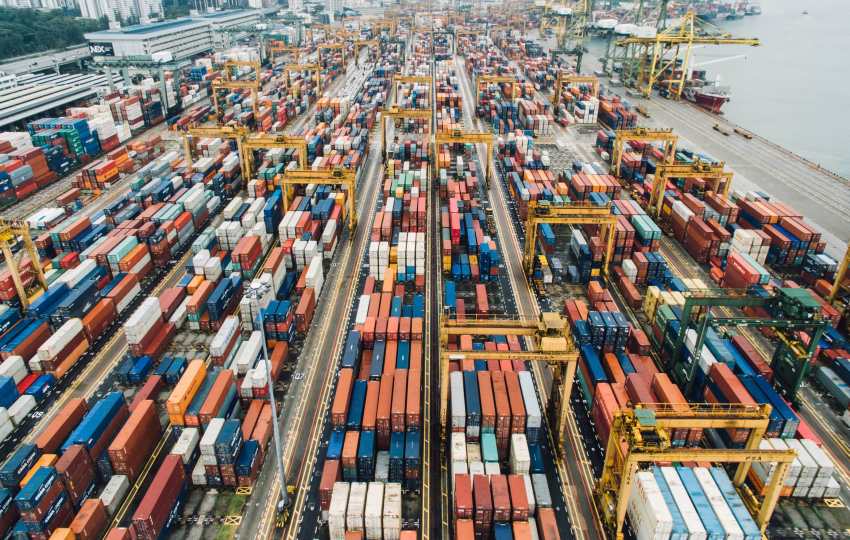The supply chain faces disruptions and hurdles from multiple sources, including labour shortages, limited or scarce resources, and increased consumer demands. Digitization of the supply chain brings all parties together to create a smoother and more efficient process.
Like other industries, logistics is poised for a shakeup from digital transformation. Supply Chain 4.0 leverages technology like big data and analytics, the Internet of Things (IoT), robotics, and automation to overcome the obstacles and create a more efficient overall process. With the right technology implementation, supply chains can better serve customers while satisfying their own needs in the process.
Find out why digitization is so important to the future of supply chains and navigating this challenging and uncertain time.
The future of supply chain digitization
Supply chain digitization is a solution to the ongoing challenges and obstacles that are disrupting the global supply chain. As the industry faces increasing pressure, consumer demands, and widespread disruptions, these technologies ensure that logistics companies can streamline their processes and deliver better service to customers.
These are the priorities in the future of supply chains:
- Flexibility: Amid disruptions, flexibility is one of the most vital aspects of keeping a supply chain running smoothly. Technology for real-time planning and forecasting keeps logistics companies flexible as conditions and expectations change on a global scale. When the market pivots rapidly, agile companies with the right technology in place can weather the changes and keep the business moving forward.
- Speed: Consumers expect their goods delivered quickly, no matter where they’re coming from. With disruptions and congestion causing delays in major routes, this demand is more difficult for logistics companies to meet. Product distribution with forecasting and predictive analytics provide a comprehensive view of internal and external factors that can impact the supply chain, allowing logistics companies to adapt.
- Personalization: Consumer expectations and demands include an increased call for personalization and an improved experience. Companies can address this need with mass customization and microsegmentation to deliver what customers are looking for in granular clusters rather than as a whole.
- Accuracy: Real-time, end-to-end transparency of the entire supply chain process is integral to effective supply chain management. Logistics companies need a comprehensive view of all business processes, including the location of goods and delivery vehicles. Technology solutions can ensure this level of accuracy in the entire supply chain.
- Efficiency: Automation is vital to supply chain efficiency. Automated solutions like self-driving trucks and robotics process automation streamline all aspects of the supply chain, reducing delays and freeing team members to focus on mission-critical tasks.
Key technologies for digitization
Demand-driven supply chain management
Supply chain flexibility is crucial to addressing the challenges and obstacles in logistics and transportation. Demand-driven supply chain management is not a new concept in logistics, but the increasing capabilities of data analytics and insights allow logistics companies to stay agile and adapt to changing demands and expectations.
Predictive analytics and machine learning with IoT devices can amass high volumes of data and analyze it in real-time, offering rapid and actionable insights. Companies can serve customers better and adapt more quickly to changes and shifts that occur in the market.
Smart technology
Smart technology is finding new applications and use cases across nearly every industry, including logistics. Smart devices can be used for everything from cargo tracking to automation and robotics, providing a full view of the supply chain and areas of improvement. Remote fleet management also uses smart technology for more transparency across the transportation network.
Automation also makes logistics companies more efficient. Robots and other technology can manage the mundane tasks, allowing team members to focus on the tasks only they can do – the creative processes and human insights that are necessary to reach business outcomes. Using automation also limits human errors that can lead to costly delays and lost revenue.
For example, an automated storage and retrieval system for multiple customers at a single fulfilment centre automates entire sections of the warehouse to deliver goods directly to the staff for retrieval. Logistics companies like DB Schenker use this to expedite the processing times and conserve space.
One leading example is business intelligence technology, which can optimize the supply chain by responding to data from IoT devices. DB Schenker is using IoT to monitor cold chain storage of goods and ensure uptime and productivity of automated equipment, such as robotics. Cloud-based analytics software can also retrieve data from smart devices, offering insightful information to employees or other warehouse applications.
Cloud-enabled GPS and RFID technology solutions are another outstanding example of how technology can be leveraged in the supply chain. These solutions can provide accurate, real-time data on the goods in a warehouse and vehicles in transit within the transportation network, identifying inefficiencies and optimized delivery processes.
Cyber security
Cyber security is at the forefront of every industry’s digital transformation. Though technology can make processes more efficient, it also has inherent vulnerabilities. The digital supply chain has multiple ingress points that allow hackers and other bad actors to gain access to multiple parties. Logistics typically includes multiple parties, and every one of them needs to be focused on ironclad security – the weakest link in the chain can bring everything down. If only one party is lacking in tight security protocols, all other partners can suffer the consequences.
Suppliers, manufacturers, and all other parties must make security a priority by using trade surveillance software across every aspect of the supply chain. End-to-end security is a must to eliminate all ingress points for bad actors and protect the whole of the network. Every partnership must have this foundation and commitment to stringent security protocols to not only establish standards but regularly monitor and evaluate risk.
Digital thread
The digital thread is the use of digital tools for design, evaluation, and lifecycle management. This acts as a closed-loop between the physical world and the digital one, allowing suppliers, manufacturers, and consumers to share information and allow for a responsive supply chain.
The digital thread has a lot of value, but it’s not a standalone technology. Parties and workflows need to come together to form an integrated value chain and allow for communication and collaboration.
Supply chain customization
The increased consumer demands and expectations are one of the more significant challenges in modern supply chain management. With most businesses offering rapid shipping and delivery as standard, sometimes for free, consumers expect all businesses to provide rapid order processing and delivery. Businesses need to offer cheap, fast shipping options to stay competitive.
Consumers are also less likely to accept extended processing times, shipping delays, or delivery errors that extend the entire process. If this happens, it could drive a customer to a competitor and leaves a bad impression. One solution to this is a centralized distribution solution with real-time inventory management systems to reduce errors and streamline the process.
Customization options and supply chain transparency also offer solutions to consumer demands. Options like rapid prototyping and additive manufacturing keep manufacturers flexible in the face of rising and changing consumer demands, offering more customized solutions without added burden.
Looking to the future of logistics
Congestion in transportation channels, a shortage of labour across all aspects of the supply chain, increasing consumer demands, and other challenges are significantly impacting the logistics industry. Supply Chain 4.0 offers solutions with technology like cloud-based GPS, data analytics, robotics and automation, and more, revolutionizing the supply chain and keeping businesses agile in the face of challenges and disruptions. Digitizing the supply chain with the right technologies ensures agility, efficiency, customization, and transparency to better serve the needs of customers while also delivering the tools logistics companies need to stay ahead.

Author Bio
David is CEO of DB Schenker USA, a 150 year old leading global freight forwarder and 3PL provider. David Buss is responsible for all P&L aspects in the United States, which is made up of over 7,000 employees located throughout 39 forwarding locations and 55 logistics centers.

